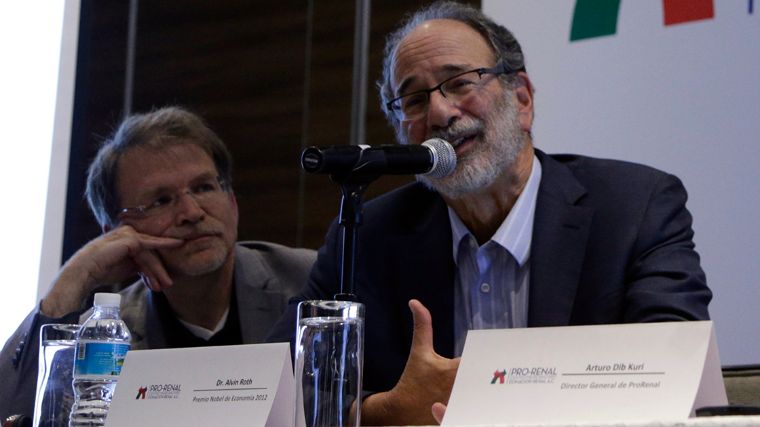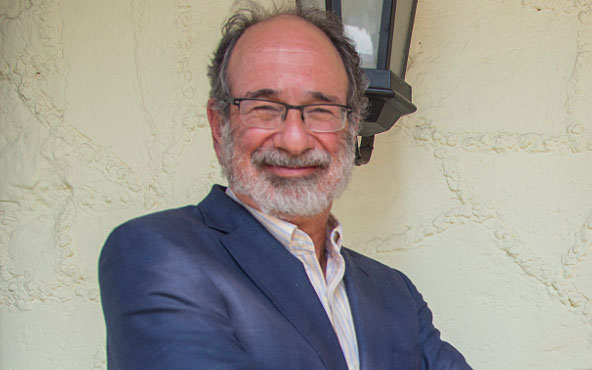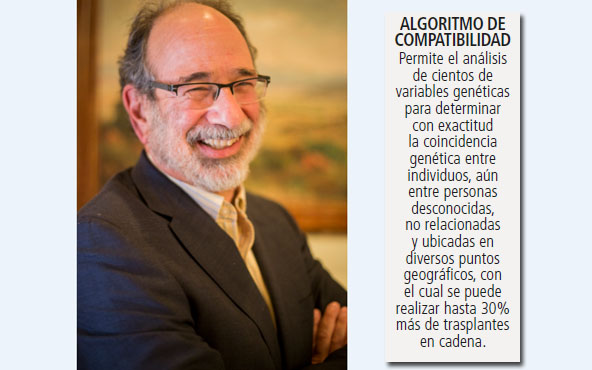I'm travelling to Mexico today, to speak about kidney exchange at a health forum sponsored by Forbes, and to meet with colleagues at
Pro-Renal, the new kidney exchange program there.
Here's a brief news story:
Alvin E. Roth, el Nobel de Economía que ha salvado miles de vidas
No es médico, pero el doctor Roth ha ayudado a miles de personas a recibir un trasplante de riñón, lo que le valió un Nobel en 2012.
And here's the conference program:
FORO FORBES SALUD
May 23,
HACIENDA DE LOS MORALES, CDMX
Agenda (via Google translate)
08:30 HRS. WELCOME
MANAGING TEAM OF FORBES MEDIA LATAM
08:40 HRS. FORBES HEALTH FORUM RECOGNITION
ALFREDO QUIÑONES-HINOJOSA , "DOCTOR Q", MD, FAANS, FACS. WILLIAM J. AND CHARLES H. MAYO PROFESSOR | CHAIR, NEUROLOGIC SURGERY
Dr. Alfredo Quiñones is an example to follow. His history as a migrant in the United States is a reflection of tenacity, dedication, inspiration. He is currently one of the most recognized doctors in the United States for his contributions to neurosurgery. And it's Mexican.
09:00 HRS. INAUGURAL DISCOURSE
TBD
An economic-financial diagnosis of the sector and the challenges it faces such as increased investment in health services.
09:30 HRS. CONFERENCE.
"THE ECONOMY CURES THE HUMANS"
ALVIN E. ROTH , NOBEL PRIZE OF ECONOMY 2012
The work of Dr. Roth has allowed the realization of more than 4 thousand kidney transplants in the United States. This economist developed a "Algorithm of Compatibility" based on technology, big data and the economy applied to health that is solving two of the main public health problems in the world: chronic renal failure and incompatibility between couples of donors and recipients of transplants.
10:00 HRS. RECESS | EXPO | NETWORKING OPPORTUNITY
10:30 HRS. PANEL. 1
"HEALTHY SOCIETY = HEALTHY ECONOMY"
Investing in health can mean big business, but above all the best practice to build a better future. The principle is basic: if we have healthy Mexicans, companies and the public sector would register a better performance and, consequently, economic activity would register better numbers. How to face costs, have the necessary infrastructure, treat chronic degenerative diseases and maintain a decent level of quality of life?
DR. DAVID KERSHENOBICH STALNIKOWITZ , DIRECTOR GENERAL OF THE NATIONAL INSTITUTE OF MEDICAL SCIENCES AND NUTRITION SALVADOR ZUBIRÁN
ÁNGELES DE GYVES , CEO OF THE CORPORATE HEALTH AND WELFARE COUNCIL
11:00 HRS. PANEL. 2
"THE DIGITAL WORLD IN HEALTH"
The patient has changed and that forces companies in the sector to adapt to the new circumstances. The digital revolution is largely responsible for this transformation. How to understand the new consumption habits? How to transmit the information to customers? This table will be aimed at understanding and applying the best techniques to know the voice of the e-patient.
JENNIFER BARBA , FOUNDER AND CEO OF FRAME CONSULTING
ALEJANDRO PAOLINI , MANAGING DIRECTOR OF SIEMENS HEALTHINEERS MESOAMÉRICA AND MEXICO
HÉCTOR VALLE MESTO , EXECUTIVE PRESIDENT OF THE MEXICAN FOUNDATION FOR HEALTH, AC
JORGE RUIZ ESCAMILLA
11:30 HRS. PANEL. 3
"HACKING HEALTH"
New forms emerge as a muscle for efficient use and maximization of resources, patient management and electronic records. Along with this, home care, mobile applications and regulatory challenges begin to be promoted. Also, the best practices of IT companies. This space will serve to know the best strategies that allow the Health Sector to capitalize on the new trends.
MARTHA GONZÁLEZ , DIRECTOR OF IBM WATSON & amp; CLOUD PLATFORM
JAVIER CORDERO , PRESIDENT OF ORACLE MEXICO
FERNANDO OLIVEROS , CEO OF MEDTRONIC
GABRIEL LOOR MD., FACC , SURGICAL DIRECTOR, LUNG TRANSPLANT PROGRAM BAYLOR AT ST. LUKE'S MEDICAL CENTER
MODERATOR : ARMANDO SANDERS , CO-FOUNDER OF GENO +
12:00 HRS. PANEL. 4
"HEALTH AS A BUSINESS AND INVESTMENT"
Health is a good investment. The Mexican Pharmaceutical Industry as a contributor to the productive capacity of the country. Multinational and Mexican companies will share their success stories and strategies to adapt to market conditions.
RODRIGO PUGA , CEO OF PFIZER MEXICO
ANA LONGORIA , CEO OF NOVARTIS MEXICO
RAFAEL GUAL , DIRECTOR GENERAL OF CANIFARMA
VLADIMIRO DE LA MORA , PRESIDENT OF GE MEXICO
MODERATOR : JUANA RAMÍREZ , FOUNDER AND PRESIDENT OF SOHIN
12:30 HRS. CONFERENCE.
"EXPONENTIAL HEALTH", ACCORDING TO SINGULARITY UNIVERSITY
RAYMOND MCCAULEY , CHAIR OF THE BIOTECH TRACK OF SINGULARITY UNIVERSITY
13:00 HRS. TIME FOR FOOD
14:30 HRS. PANEL. 5
"THE NEW FINANCING"
Pharmaeconomics, changing the health dialogue. Going from asking for "budget" and "demonstrating that health brings productivity". This space has a clear objective: to understand public finances and the impact it has on the country's fiscal balance. What are the new financing models? Topics such as investment in infrastructure, private equity and health financing models will be put on the table.
PATRICK DEVLYN , PRESIDENT OF THE CCE HEALTH COMMISSION
PABLO ESCANDÓN , PRESIDENT AND DIRECTOR GENERAL OF GRUPO NADRO
FRÈDÈRIC GARCÍA , PRESIDENT OF THE EXECUTIVE BOARD OF GLOBAL COMPANIES (CEEG)
FÁTIMA MASSE , CONSULTANT IN URBAN URBAN DEVELOPMENT
ANTONIO CHEMOR RUIZ , NATIONAL COMMISSIONER OF SOCIAL PROTECTION IN HEALTH / PEOPLE'S INSURANCE
MODERATOR : GUSTAVO CANTÚ , CEO OF SEGUROS MONTERREY NEW YORK LIFE
15:00 HRS. PANEL. 6
"THE END OF THE TRADITIONAL DISTRIBUTION"
New disruptive models of distribution and access to primary health care. The customer service in the last chain of the process in the distribution of the drug is being transformed.
MAX LEONARDO , ATTORNEY GENERAL OF PHARMACIES OF SAVINGS
RICARDO MARTÍ , DIRECTOR OF WALMART FARMACIAS
15:30 HRS. CONFERENCE.
"BENEFITS OF AEROSPACE MEDICINE ON EARTH"
EMMANUEL URQUIETA, MD, MS , SENIOR RESEARCH PORTFOLIO MANAGER OF THE TRANSLATIONAL RESEARCH INSTITUTE FOR SPACE HEALTH
16:00 HRS. HEALTH VIEWED BY THE NEXT SEXENIUM
The political times are already here and, under this environment, this table will convene the links of the candidates to the Presidency of the Republic to share with the audience the great tasks that would be carried out in the next six years.
JORGE ALCOCER VARELA , REPRESENTATIVE OF ANDRÉS MANUEL LÓPEZ OBRADOR, PRESIDENTIAL CANDIDATE FOR THE COALITION TOGETHER WE WILL HISTORY
16:30 HRS. CLOSING















